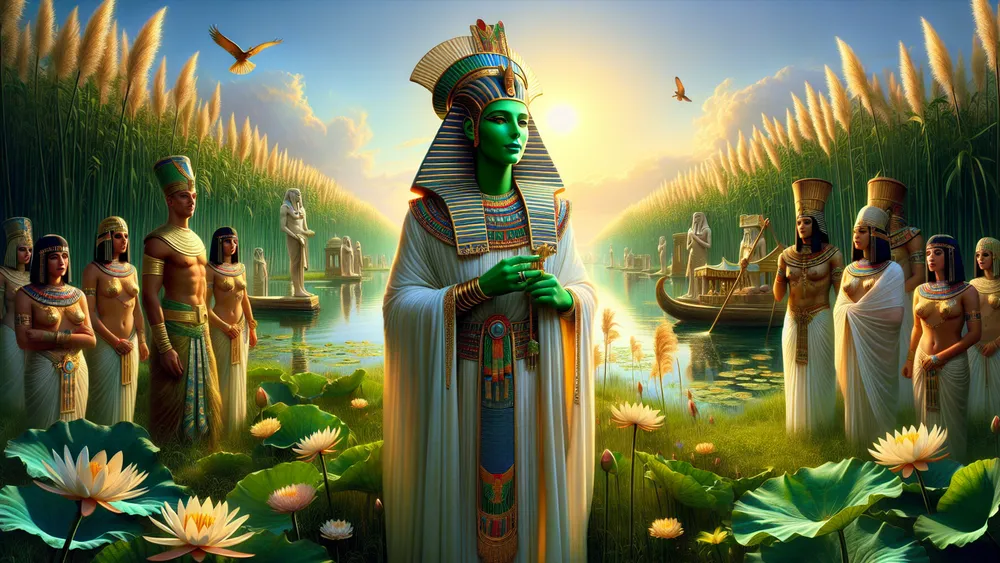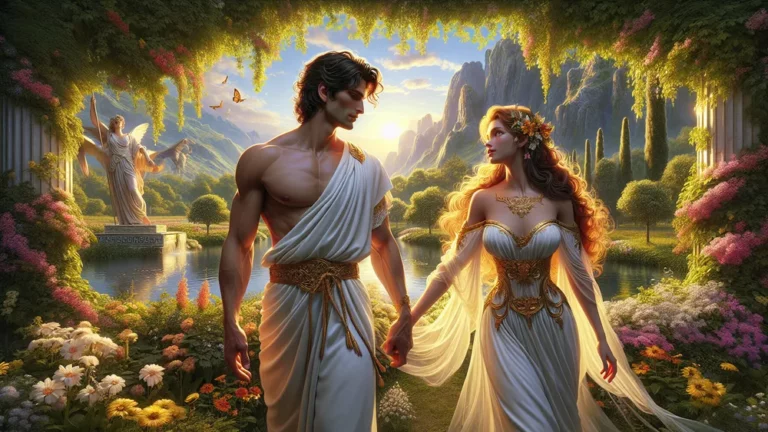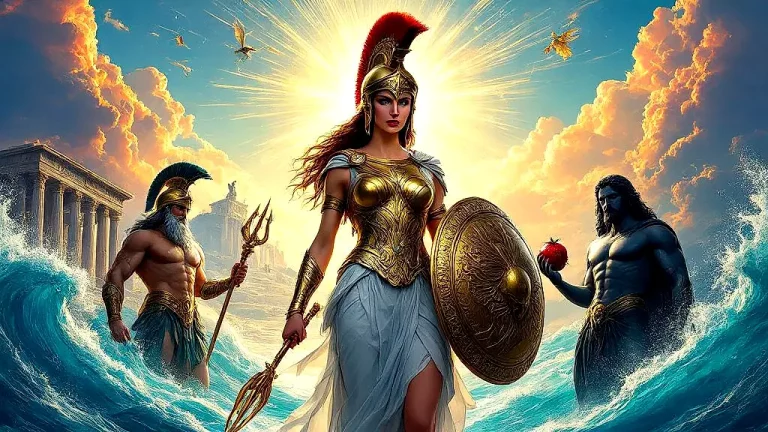Field Of Reeds: Egyptian Mythological Paradise
Think about a place where the soul gets never-ending peace and joy, a paradise that old Egyptians thought was waiting for them after they died. This place is called the Field of Reeds, an idea deeply rooted in Egyptian myths and religion. This blog post will look at the Field of Reeds in great detail. Starting with a summary and important facts about this imagined paradise.
Key Points:
- The Field of Reeds is the Egyptian afterlife paradise where souls live forever in peace and happiness.
- It represents the ultimate reward for living a good life and emphasizes morality, justice, and life after death.
- Similar to concepts like Heaven in Christianity, Elysium in Greek myths, and Valhalla in Norse myths.
- The idea of the Field of Reeds evolved over time, becoming more detailed and structured.
- Osiris, the god of the afterlife, plays a crucial role in guiding souls to the Field of Reeds.
- Funerary rituals and texts like the Book of the Dead were essential in preparing souls for the afterlife.
- The Field of Reeds is described as a green, fertile land where souls engage in familiar activities but without suffering or hardship.
Look at how it changed over time and the religious importance it had. The journey a soul must take to get there will be covered. Also, we will talk about what people thought life in the Field of Reeds was like and compare it to other afterlife ideas in Egyptian mythology and beyond.
By the end of this post, you will understand the Field of Reeds and its role in old Egyptian culture.
Field Of Reeds: Overview and Key Facts
| Key Point | Description |
|---|---|
| Definition | The Field of Reeds, which some also call Aaru, is the Egyptian afterlife paradise where souls live forever in peace and happiness. |
| Significance | It shows the ultimate reward for living a good life, and it shows the Egyptians’ beliefs in morality, justice, and life after death. |
| Comparison to Other Cultures | Similar to Heaven in Christianity, Elysium in Greek myths, and Valhalla in Norse myths, the Field of Reeds is a place of endless happiness. |
| Evolution Over Time | The idea changed from early Egyptian beliefs and got influenced by different rulers and changes in religion. It became more detailed and structured. |
| Key Texts and Artifacts | The Field of Reeds gets mentioned in important texts like the Pyramid Texts, Coffin Texts, and the Book of the Dead, and it is shown in many tomb paintings and artifacts. |
| Osiris’s Role | Osiris, who is the god of the afterlife, is very much linked with the Field of Reeds. He watches over the souls’ journey to make sure they reach this paradise. |
| Funerary Rituals | Old Egyptians did complex funeral rituals, which included the Book of the Dead, to help guide the soul through the challenges of the afterlife to reach the Field of Reeds. |
| Weighing of the Heart | This crucial ceremony weighs the heart of the dead against the feather of Ma’at to see if they are worthy to go into the Field of Reeds. |
| Ka, Ba, and Akh | These three parts of the soul are key in the journey to the Field of Reeds, with each part helping the soul’s existence and change in the afterlife. |
| Physical Appearance | The Field of Reeds is described as a green, fertile land with lots of crops, water, and resources, showing forever prosperity and harmony. |
| Daily Life | Souls in the Field of Reeds do activities much like their earthly lives, like farming, talking with others, and worshipping the gods, but there is no suffering or hardship. |
| Modern Representations | The Field of Reeds still appears in modern media, books, and popular culture, affecting the current understanding of Egyptian mythology. |
Getting to Know the Field of Reeds
If we really want to get to know the Field of Reeds, we need to look more into what it means, why it matters, and how it has changed. These parts need to be explored. Therefore, let’s look at these in detail.
What Exactly is the Field of Reeds?
The Field of Reeds, also known as Aaru, is the Egyptian afterlife paradise. Souls who have led a good life are believed to live here forever. It is a place where the land is green and full of life. Also, there are lots of crops, clear waters, and many resources.
This paradise is not just a reward for the soul but it shows the Egyptians’ strong beliefs in morality, justice, and the afterlife. In Egyptian mythology, the Field of Reeds is the final place for a soul, free from the troubles of earthly life, offering eternal peace and happiness.
To understand better, the Field of Reeds can be compared to other afterlife ideas. For example, it is like Heaven in Christianity. Both promise eternal happiness for the righteous. In Greek mythology, people have Elysium, a paradise for heroes and those the gods favor. Norse mythology talks about Valhalla, where warriors who die in battle are honored. These examples show the common human hope for a good afterlife. Here are some key points about the Field of Reeds:
- It is a place with forever peace and happiness.
- It shows the Egyptians’ beliefs in morality and justice.
- It is similar to Heaven, Elysium, and Valhalla in other cultures.
The Field of Reeds is the Egyptian paradise where souls who lived well find eternal peace and happiness, reflecting beliefs in morality and justice shared across different cultures.
How the Field of Reeds Idea Grew Over Time
The idea of the Field of Reeds changed a lot from early Egyptian beliefs to later times, showing changes in religion and society. In the beginning, the afterlife was an unclear idea. Often connected to the journey of the sun god Ra through the underworld.
But as time went by, the idea of a more structured and perfect afterlife started to form, ending up as the detailed picture of the Field of Reeds.
This change can be seen in the shift from the Old Kingdom’s Pyramid Texts, which gave the first mentions of a paradise after death, to the more detailed descriptions found in the Coffin Texts of the Middle Kingdom and the Book of the Dead in the New Kingdom.
Different rulers and religious changes were important in shaping the Field of Reeds idea. For example, during the Old Kingdom, the afterlife was mainly for the king and the elite. But by the time of the Middle Kingdom, this idea included common people too.
The New Kingdom added more details to the journey after death, with spells and rituals to help the soul face its challenges. These changes are seen in important texts like the Pyramid Texts, Coffin Texts, and the Book of the Dead, which give a lot of insights into how Egyptians thought of the Field of Reeds.
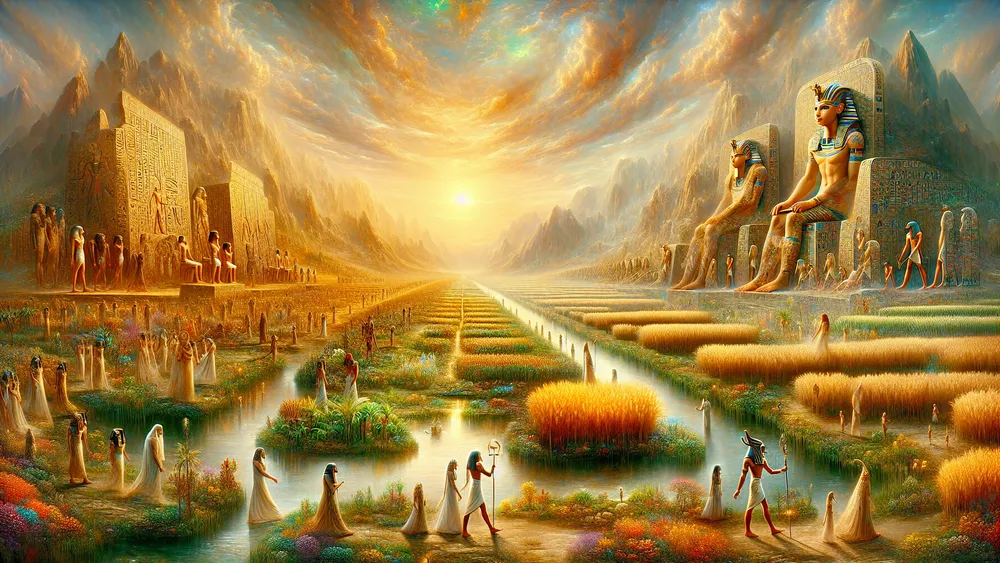
Plus, tomb paintings and artifacts offer a lot of information that helps understand the importance and change of this afterlife paradise.
What It Means in Religion
To really get the importance in religion of the Field of Reeds, we need to look at the roles of the key gods and the practices that guided the souls to the paradise. For instance, let’s look at these parts.
Osiris’s Role in the Field of Reeds
Osiris, the god of the afterlife, has the main part in the idea of the Field of Reeds. Think of Osiris as the kind leader of this paradise who looks after the souls who made it through the tests of the afterlife. According to Egyptian stories, Osiris was killed by his brother, Set, cut into pieces, and then brought back to life by his wife, Isis.
This story of death and coming back to life not only shows Osiris‘s link to the afterlife but also the never-ending cycle of life, death, and being born again. As the judge of the dead, Osiris leads the Weighing of the Heart ceremony. He decides if a soul deserves to go into the Field of Reeds.
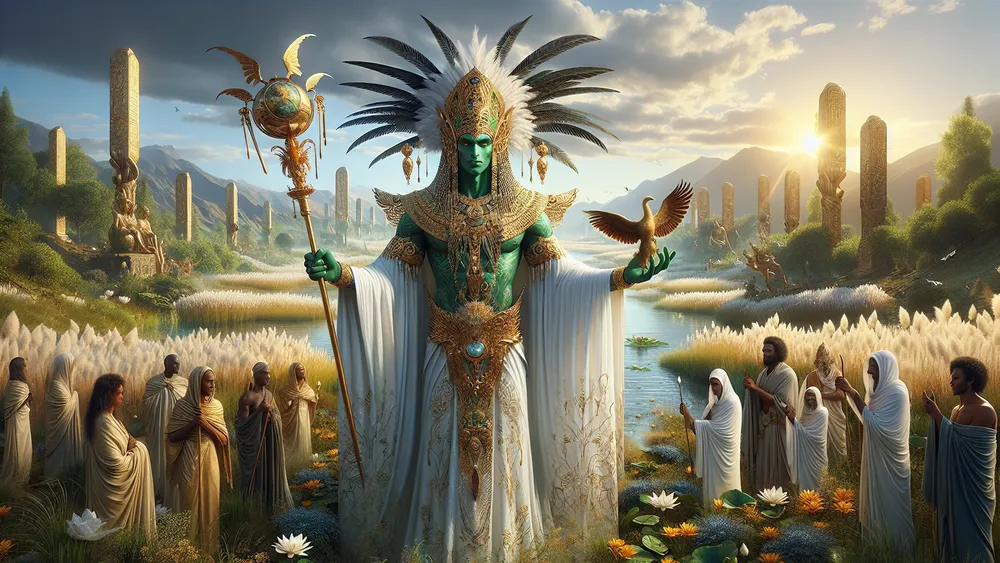
His being there ensures it stays a place of order, fairness, and peace forever, showing the main values of ancient Egyptian religion.
Funeral Rites and the Soul’s Journey
Burial practices in ancient Egypt were carefully made to make sure a soul had a safe trip to the Field of Reeds. Think about the detailed steps of body wrapping, where they kept the body in good shape to protect the soul in the afterlife. Next, was the opening of the mouth ceremony. This ritual was meant to restore the dead person’s senses and abilities there.
Amulets and many protective charms were put within the wrappings to protect the soul from bad forces. Overall, these practices were important steps thought to help the soul in its trip through the afterlife, making sure it could handle the tests ahead. The Book of the Dead, with other burial texts like the Pyramid Texts and Coffin Texts, had a key part in showing the soul the way through the afterlife.
These texts acted as manuals, full of spells, chants, and prayers for helping the dead overcome problems and reach the Field of Reeds. The trip was filled with challenges, including the Weighing of the Heart ceremony. Here, the heart was weighed against the feather of Ma’at, the goddess of truth and justice.
For instance, here are the key steps and challenges a soul must go through:
- Go through body wrapping and the opening of the mouth ceremony.
- Walk through the Duat, the Egyptian underworld, avoid dangers.
- Pass the Weighing of the Heart ceremony to prove being good.
- Use spells and chants from the Book of the Dead to get past problems.
- Finally, reach the Field of Reeds to live in peace and happiness forever.
The Soul’s Adventure
Now that we have looked at the rituals and texts that show the soul, let’s look at the soul’s journey itself and the tests it has to face in the afterlife.
The Weighing of the Heart Ceremony
Think about standing in front of Osiris in the afterlife, your heart which is on one side of a scale and the feather of Ma’at on the other side. This is the Weighing of the Heart ceremony, a key time where your moral honesty is judged. Ma’at, the goddess of truth, justice, and cosmic order, has a big part here because her feather shows these rules.
If your heart, full of sins, weighs more than the feather, it is considered not pure. The results are serious: the heart is eaten by Ammit, a scary creature that is part lion, hippopotamus, and crocodile, which leads to forever punishment for the soul.
But if your heart balances with or is lighter than the feather, it means you lived by Ma’at‘s rules, giving you entry to the Field of Reeds and peace forever.
How Ka, Ba, and Akh Play a Part in the Afterlife
In ancient Egyptian belief, the soul had three important parts: the Ka, Ba, and Akh. The Ka is the life force or spirit double that stays with the body after death and that needs support through gifts.
The Ba shows the personality of the dead person and is often shown as a bird with a human head which can move between the living world and the afterlife. Last, there is the Akh, which is the changed and honored spirit that comes out after death and is made right through funeral rites and living morally.
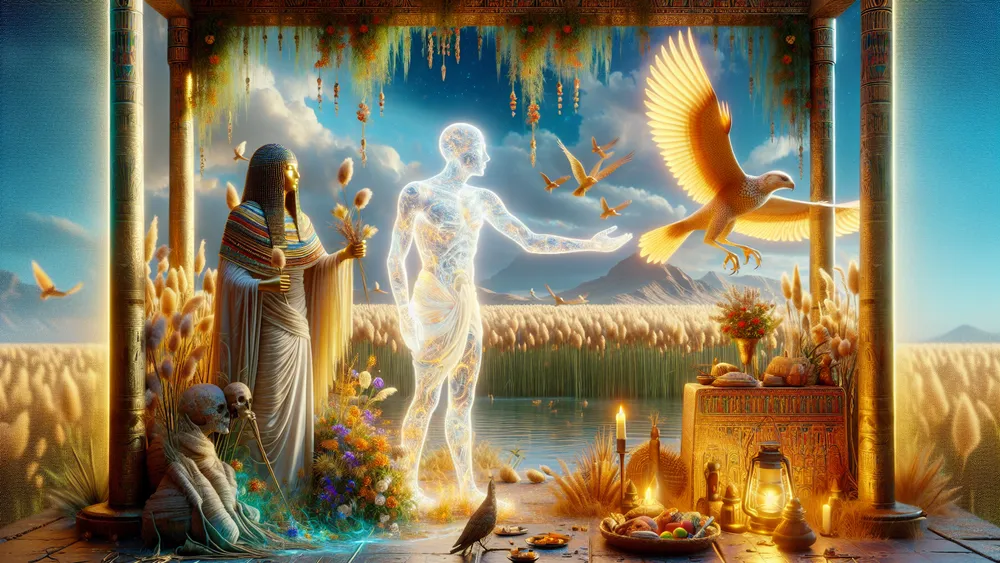
Each part has an essential role in the trip to the Field of Reeds, making sure the soul moves right and lives forever.
The Ka, Ba, and Akh each help the soul’s travel in their own ways. The Ka needs gifts and rituals to stay connected with the living and the dead. The Ba, which can move freely, visits the living and goes back to the tomb keeping the dead person connected to both worlds. The Akh is the perfect spirit, needed for entering the Field of Reeds and stands for the soul’s full change and being allowed into the afterlife. To help you see these roles clearly, here’s a table comparing the characteristics and functions of Ka, Ba, and Akh:
| Aspect of the Soul | Definition | Role in Afterlife | Characteristics |
|---|---|---|---|
| Ka | Life force or spirit double | Needs support through gifts | Stays with the body |
| Ba | Personality and individuality | Moves between living world and afterlife | Shown as a bird with a human head |
| Akh | Changed and honored spirit | Needed for going into the Field of Reeds | Made right through rites and moral living |
What the Field of Reeds is Like
After we know the soul’s journey and its parts, now let’s look at what is there in the Field of Reeds, which is the main paradise in Egyptian mythology.
How Does the Field of Reeds Look?
Think about a place where the land is always green and healthy, that has endless fields of tall, golden reeds swaying in the wind. According to old writings and pictures, the Field of Reeds, or Aaru, is a paradise that is like the best version of the Nile Delta, with lots of green plants, clear waters, and active life.
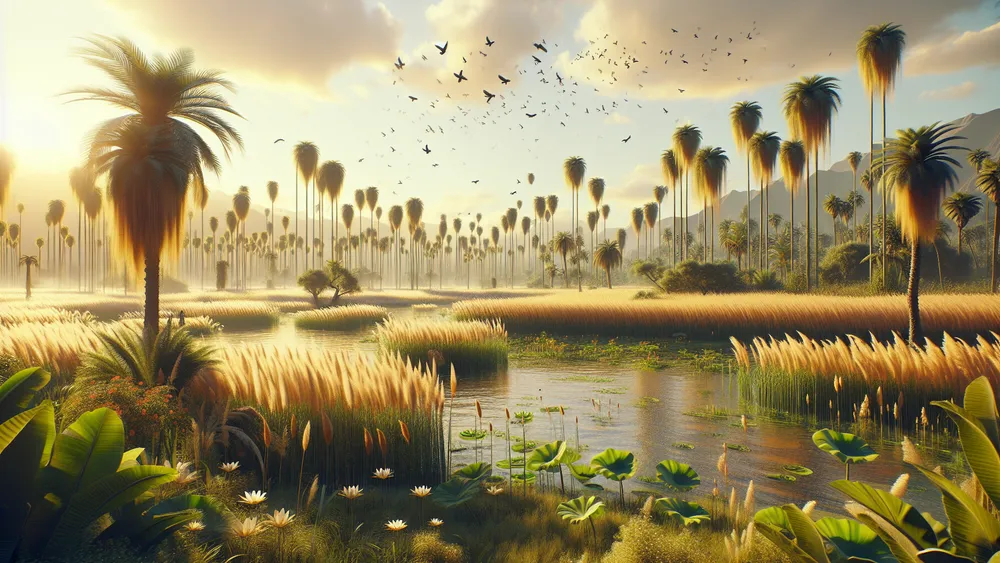
This very nice area shows not only a lot of physical things but also happiness and eternal peace. For the old Egyptians, who depended a lot on farming, such a place was the best reward – a spot where they could keep doing their daily tasks in a perfect, unchanging land.
The green fields in the Field of Reeds which they would enjoy signify the ongoing support and wealth, free from the troubles and unknowns of mortal life.
Everyday Life in the Field of Reeds
Where you spend your days in the Field of Reeds, life carries on in a perfect, never-ending way. The old-time Egyptians thought that, in this paradise, the souls would do things and jobs like what they enjoyed on earth, but without problems. Each day would bring happiness, as souls would work the fields, look after crops, and be with loved ones. Relationships strong, groups do well in peace. For instance, some things and jobs that souls would take part in are:
- Farming and Agriculture: Working on fields and getting ongoing harvests.
- Socializing: Being with family and friends, keeping strong connections.
- Craftsmanship: Doing different crafts and trades, getting better at skills with no time limits.
- Worship and Rituals: Taking part in religious events and honoring the gods.
- Leisure Activities: Enjoying music, dance, and other forms of fun.
Comparing and Other Ideas
Now that we have looked at the very nice life in the Field of Reeds, let’s, moreover, compare this idea with other life after death thoughts in Egyptian mythology and other places.
Other Afterlife Ideas in Egyptian Mythology
While the Field of Reeds shows a very nice perfect place, Egyptian mythology also has the idea of the Duat, an unknown and often dangerous place of the dead. Duat is shown as a large, dark underworld where the sun god Ra goes every night, fighting chaos and making sure of the sun’s coming back each morning.
Unlike the calm and fertile Field of Reeds, the Duat has many challenges and dangers, having serpents, and lakes of fire, and also different gods who test the souls of those who have died. This place works as an in-between space where souls get judged and must show they are worthy before getting to their final resting place.
On the other hand, the Field of Reeds is a reward for those who led good lives, giving peace and lots of things forever. The clear differences between these two ideas of the afterlife show the dual parts of Egyptian thoughts about death and the soul’s trip, balancing the hard parts of the Duat with the promise of forever happiness in the Field of Reeds.
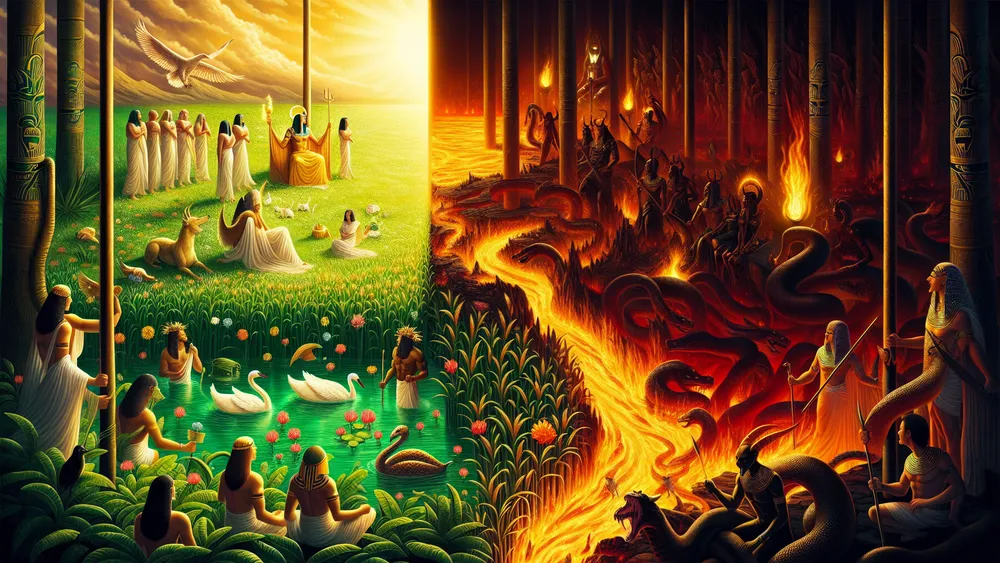
The Field of Reeds Today
In today’s world, the Field of Reeds still grabs minds and is often shown in today’s media, books, and modern culture. For instance, movies like “The Mummy” and TV shows such as “American Gods” show this very nice afterlife, and often they show its green, calm scene as a symbol of forever peace.
These showings help to keep the old myth alive, making it reachable to today’s people who might not know the original Egyptian writings. However, these today’s ideas can also make simple or change the original ideas, sometimes focusing more on the looks and feelings rather than the detailed religious and cultural meaning.
Despite this, the being there of the Field of Reeds in modern culture plays a key role in shaping today’s understanding of Egyptian mythology, making sure that these old thoughts stay important and interesting in today’s time.
FAQs
1. How do you reach the Field of Reeds?
To reach the Field of Reeds, a soul must successfully navigate the challenges of the afterlife and pass the Weighing of the Heart ceremony.
2. Who can enter the Field of Reeds?
Who can enter the Field of Reeds is determined by the moral purity and righteousness of the soul, as judged by the Weighing of the Heart ceremony.
3. What is the significance of the Field of Reeds in Egyptian religion?
The significance of the Field of Reeds in Egyptian religion lies in its representation as the ultimate paradise where souls live in eternal peace and fulfillment.
4. How is the Field of Reeds different from other afterlife concepts?
The Field of Reeds is different from other afterlife concepts because it is depicted as an eternal paradise where souls live a life similar to their earthly existence but in a perfected, idyllic state.

